
Tierra del Fuego National Park: Argentina's Untamed Wilderness
Explore Tierra del Fuego National Park, Argentina’s southernmost wilderness, rich in diverse landscapes, wildlife, and cultural history, perfect for nature and adventure enthusiasts.
Tierra del Fuego National Park is a vast expanse of natural beauty located at the southernmost tip of Argentina. This park is a haven for nature lovers, featuring a stunning variety of landscapes that include dense forests, glacial rivers, and pristine lakes. The park is also home to diverse wildlife such as guanacos, Andean foxes, and a multitude of bird species. Visitors can explore the park through numerous hiking trails that offer breathtaking views and a chance to connect with nature in its purest form. One of the main attractions within the park is the Lapataia Bay, where the Pan-American Highway comes to its end. Here, you can take in the panoramic views of the bay and its surrounding mountains, making it an ideal spot for photography. The park also features several scenic lookouts, such as the Cerro Guanaco, which offers a challenging hike but rewards trekkers with spectacular vistas. For those interested in history, Tierra del Fuego National Park holds significant cultural importance. It is home to archaeological sites of the ancient Yamana people, who once inhabited this remote region. Interpretive trails and information boards provide insights into their way of life and their adaptation to the harsh environment. Whether you are an adventurer, a history buff, or simply someone seeking tranquility, Tierra del Fuego National Park offers a unique experience that captures the essence of Argentina's wild frontier.
Local tips in Tierra del Fuego National Park
- Dress in layers as weather conditions can change rapidly.
- Bring a good pair of hiking boots for the rugged terrain.
- Carry a map and be aware of your surroundings; cell service is limited.
- Visit during the summer months (December to March) for the best weather.
- Don't forget your camera to capture the stunning landscapes and wildlife.
Tierra del Fuego National Park: Argentina's Untamed Wilderness
Tierra del Fuego National Park is a vast expanse of natural beauty located at the southernmost tip of Argentina. This park is a haven for nature lovers, featuring a stunning variety of landscapes that include dense forests, glacial rivers, and pristine lakes. The park is also home to diverse wildlife such as guanacos, Andean foxes, and a multitude of bird species. Visitors can explore the park through numerous hiking trails that offer breathtaking views and a chance to connect with nature in its purest form. One of the main attractions within the park is the Lapataia Bay, where the Pan-American Highway comes to its end. Here, you can take in the panoramic views of the bay and its surrounding mountains, making it an ideal spot for photography. The park also features several scenic lookouts, such as the Cerro Guanaco, which offers a challenging hike but rewards trekkers with spectacular vistas. For those interested in history, Tierra del Fuego National Park holds significant cultural importance. It is home to archaeological sites of the ancient Yamana people, who once inhabited this remote region. Interpretive trails and information boards provide insights into their way of life and their adaptation to the harsh environment. Whether you are an adventurer, a history buff, or simply someone seeking tranquility, Tierra del Fuego National Park offers a unique experience that captures the essence of Argentina's wild frontier.
When is the best time to go to Tierra del Fuego National Park?
Iconic landmarks you can’t miss
Plaza Islands Malvinas
Explore the stunning Plaza Islands Malvinas in Ushuaia for breathtaking views and a tranquil escape into nature's beauty.

Laguna Esmeralda
Explore the breathtaking beauty of Laguna Esmeralda, a glacial lagoon in Tierra del Fuego, renowned for its stunning turquoise waters and scenic hiking trails.

Cartel Ushuaia
Explore Cartel Ushuaia, a moving tribute to soldiers and a gateway to breathtaking landscapes in Argentina's southernmost city.

Estacion Tierra del Fuego National Park
Explore the breathtaking landscapes and rich wildlife of Tierra del Fuego National Park, a must-visit destination for nature lovers in Argentina.

Glaciar Vinciguerra
Explore the breathtaking Glaciar Vinciguerra in Ushuaia, a nature preserve showcasing stunning landscapes and unique glacial formations.

Beaver
Explore the stunning landscapes and rich wildlife of Beaver, a must-visit tourist attraction in Ushuaia, Tierra del Fuego Province.

Cerro Alarkén
Explore Cerro Alarkén, a breathtaking nature preserve in Tierra del Fuego Province, where stunning landscapes and diverse wildlife await every adventurer.

Cerro Guanaco
Experience the awe-inspiring Cerro Guanaco in Ushuaia's Parque Nacional Tierra del Fuego, a haven for hikers and nature lovers alike.

Puerto Arias
Experience the captivating beauty and tranquility of Puerto Arias in Ushuaia, a hidden gem in Argentina's stunning Tierra del Fuego Province.

Monumento Antiguos Pobladores
Experience the rich history of Ushuaia at the Monumento Antiguos Pobladores, a stunning landmark celebrating the region's early settlers amidst breathtaking landscapes.

Intendencia Parque Nacional Tierra del Fuego
Explore the breathtaking landscapes and unique wildlife of Tierra del Fuego National Park, the southernmost national park in the world.

Senda paseo de la isla
Explore the stunning trails of Senda Paseo de la Isla in Tierra del Fuego, where breathtaking landscapes and serene nature await.

Parque Nacional Tierra del Fuego
Discover the breathtaking landscapes and rich biodiversity of Parque Nacional Tierra del Fuego, Argentina's southernmost national park, where adventure awaits.
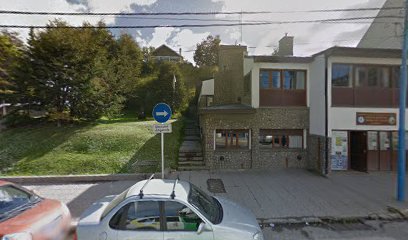
Mirador de la ciudad
Explore the breathtaking panoramic views of Ushuaia at Mirador de la Ciudad—where nature's beauty unfolds in stunning landscapes.

SENDERO AL LADO DEL RÍO
Explore the breathtaking Sendero al Lado del Río in Ushuaia, a serene trail that showcases the stunning landscapes of Tierra del Fuego Province.

Unmissable attractions to see
Museo Marítimo y del Presidio de Ushuaia
Explore Ushuaia's maritime heritage at Museo Marítimo y del Presidio, a historical treasure in the southernmost city of the world, rich with stories and artifacts.
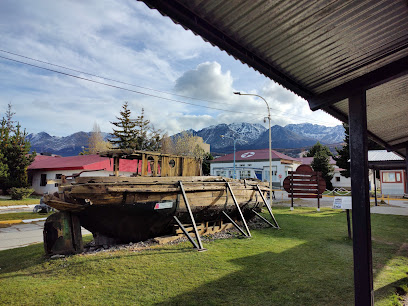
Fire Walk Shopping Center
Uncover the charm of Ushuaia at the Fire Walk Shopping Center, where shopping, dining, and local culture blend seamlessly in this iconic destination.

Plaza Islands Malvinas
Explore Plaza Islands Malvinas, a serene park in Ushuaia, where nature, tranquility, and stunning landscapes meet for an unforgettable experience.

Laguna Esmeralda
Explore the breathtaking beauty of Laguna Esmeralda, a hidden gem in Ushuaia with stunning turquoise waters and captivating mountain views.

Museo del Fin del Mundo
Explore the rich cultural and natural history of Tierra del Fuego at Ushuaia's Museo del Fin del Mundo, a must-visit for every traveler.

Mostaza
Discover the taste of Argentina at Mostaza in Ushuaia, where delicious burgers and a warm atmosphere await every traveler.

Cartel Ushuaia
Experience breathtaking views and adventure at Cartel Ushuaia, the southernmost tourist attraction in the world, surrounded by stunning landscapes.

Centro de visitantes Alakush
Explore the beauty of Tierra del Fuego at Centro de Visitantes Alakush, your gateway to adventure and local culture in Ushuaia.
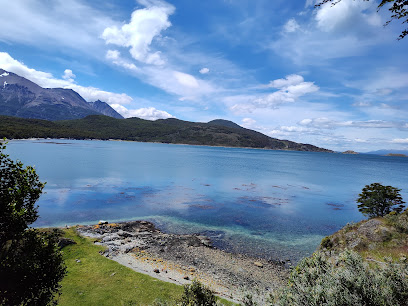
Sunstar Cinemas - Ushuaia
Discover the world's southernmost cinema at Sunstar Cinemas in Ushuaia, where stunning films meet breathtaking landscapes.

Martial Glacier
Experience the breathtaking beauty of Martial Glacier, a stunning natural wonder in Ushuaia, Tierra del Fuego, perfect for outdoor enthusiasts and nature lovers.

Muelle Turístico
Experience the breathtaking beauty and adventure of Muelle Turístico, Ushuaia's gateway to stunning landscapes and vibrant marine life.

BarDPizzas
Discover the vibrant flavors of Ushuaia at BarDPizzas, where delicious pizzas meet a welcoming atmosphere in the heart of Patagonia.

Fin de la Ruta Nacional 3
Discover the breathtaking landscapes at the southern end of Argentina's Route 3, a must-visit for adventure seekers in Tierra del Fuego.

Estacion Tierra del Fuego National Park
Immerse yourself in the natural beauty of Estacion Tierra del Fuego National Park, a haven for outdoor adventures and breathtaking landscapes in Argentina.

Glaciar Martial
Explore the breathtaking beauty of Glaciar Martial in Ushuaia, where stunning views, hiking trails, and adventure await in the heart of Patagonia.

Essential places to dine
Ramos Generales El Almacén
Discover Ramos Generales El Almacén: A delightful restaurant and bakery in Ushuaia offering local flavors and a cozy atmosphere perfect for travelers.

Bodegón Fueguino
Experience authentic Argentinian cuisine at Bodegón Fueguino in Ushuaia – where local flavors meet warm hospitality.

Isabel, Cocina al disco
Discover the flavors of Argentina at Isabel, Cocina al Disco - where traditional cooking meets contemporary elegance in Ushuaia.

El Viejo Marino
Discover authentic Argentinian flavors at El Viejo Marino in Ushuaia, where fresh seafood meets warm hospitality amidst stunning landscapes.

Taberna Del Viejo Lobo
Experience authentic Argentinian cuisine at Taberna Del Viejo Lobo, where local flavors meet cozy ambiance in Ushuaia.

Parrilla La Estancia
Experience authentic Argentine asado at Parrilla La Estancia in Ushuaia – where every meal is a celebration of flavor.

Las Cotorras
Savor authentic Argentinian cuisine in the breathtaking surroundings of Ushuaia at Las Cotorras.

Tierra Mayor
Experience the best of Argentinian cuisine and thrilling skiing at Tierra Mayor in Ushuaia's breathtaking landscapes.

Casimiro Biguá Parrilla & Restaurant - Ushuaia
Discover authentic Argentinian flavors at Casimiro Biguá Parrilla & Restaurant in Ushuaia – where grilling meets breathtaking views.

El Turco
Experience authentic Argentinian flavors at El Turco in Tierra del Fuego - where every meal tells a story.

Parrilla Libre, Restaurante Bamboo. 中国餐厅
Experience the fusion of Argentinian and Chinese cuisine at Parrilla Libre, Restaurante Bamboo in Ushuaia.

María Lola Restó
Discover authentic Argentinian cuisine at María Lola Restó in Ushuaia - where local flavors meet stunning Patagonian views.

Volver
Discover the flavors of Argentina at Volver in Ushuaia - an unforgettable dining experience amidst stunning landscapes.

La Sirena Y El Capitán
Experience authentic Argentinian cuisine at La Sirena Y El Capitán in Puerto Almanza, Ushuaia - where flavor meets stunning natural beauty.

Paso Garibaldi
Experience authentic Argentinian cuisine with breathtaking views at Paso Garibaldi in Ushuaia – a must-visit for every traveler.

Markets, malls and hidden boutiques
Fire Walk Shopping Center
Experience the best of shopping and dining at the Fire Walk Shopping Center, where local charm meets modern retail in Ushuaia.

Shopping center paseo de compras
Discover the vibrant Shopping Center Paseo de Compras in Ushuaia, where shopping meets local culture and diverse dining experiences await you.

Atlantico Sur Duty Free Shop
Explore the Atlantico Sur Duty Free Shop in Ushuaia for unique gifts and local products that embody the spirit of Tierra del Fuego.
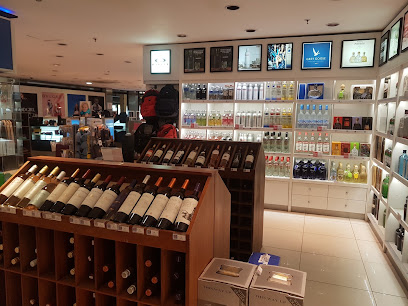
La Ultima Bita
Explore La Ultima Bita, Ushuaia's premier novelty and souvenir store, where unique treasures and local culture come together in a delightful shopping experience.

Monte Olivia Souvenir
Discover the charm of Ushuaia at Monte Olivia Souvenir, your go-to destination for unique gifts and authentic local treasures in Tierra del Fuego.

Free Stores
Discover Free Stores in Ushuaia, where shopping meets local culture in the southernmost city of the world.

Enriqueta Gasturumendi's craft fair
Discover unique handmade treasures at Enriqueta Gasturumendi's Craft Fair in Ushuaia, celebrating local artisans and vibrant culture.

Guardaparque Patagonia Store
Explore a treasure trove of unique gifts and local crafts at Guardaparque Patagonia Store in Ushuaia, the gateway to Patagonia's stunning landscapes.

The Tourist Box
Explore unique gifts and local crafts at The Tourist Box in Ushuaia, the perfect spot to find treasures from Tierra del Fuego.

Tierra de Humos
Discover the essence of Tierra del Fuego at Tierra de Humos, where locally crafted souvenirs bring the beauty of this region to life.

Popper Store
Explore the best outdoor clothing and equipment at Popper Store, Ushuaia's essential destination for adventurers and nature lovers.

Regaleria Del Hain
Explore Regaleria Del Hain in Ushuaia for unique home goods that celebrate local craftsmanship and culture amidst breathtaking landscapes.

World's End Souvenirs
Explore a treasure trove of unique souvenirs and local crafts at World's End Souvenirs, the southernmost store in the world, in Ushuaia.
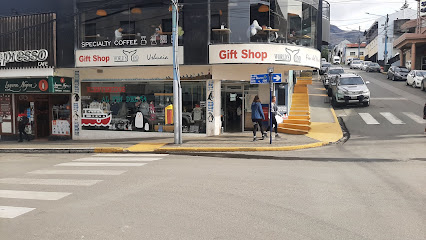
PERRO POLAR Patagonia Shop
Explore unique Patagonian souvenirs at PERRO POLAR Patagonia Shop in Ushuaia, where every purchase tells a story of the region's rich culture.

Minimarket Meraki
Discover convenience in the southernmost city: Minimarket Meraki offers essentials and local treats in Ushuaia, Tierra del Fuego.
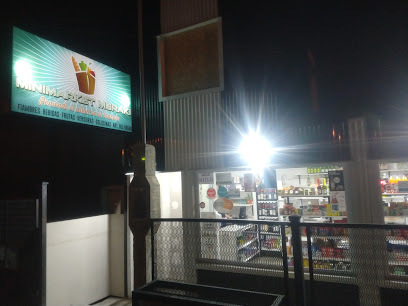
Essential bars & hidden hideouts
Tante Sara - Café & Bar
Experience the heart of Ushuaia at Tante Sara, where Argentinian flavors and a cozy atmosphere come together for an unforgettable dining experience.
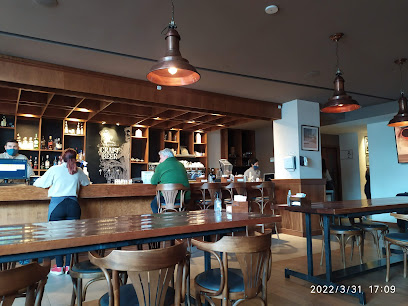
Dublin
Discover the vibrant spirit of Ireland at Dublin, Ushuaia's favorite Irish pub, where delicious food and lively entertainment come together.
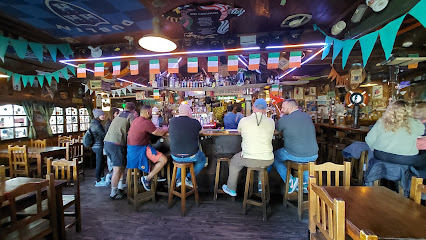
Café Bar Banana
Experience the warmth of Ushuaia at Café Bar Banana, where delicious food and inviting ambiance meet in the southernmost city.

Yamana Bar & Patín
Discover the flavors of Ushuaia at Yamana Bar & Patín, where exceptional grilled dishes meet a cozy atmosphere in the heart of Tierra del Fuego.

Santos
Discover the vibrant atmosphere of Santos Bar in Ushuaia, where local flavors meet breathtaking views for an unforgettable experience.

Viagro
Discover the vibrant nightlife of Ushuaia at Viagro, where local spirits and friendly vibes create unforgettable memories.

Brix Bar
Discover Brix Bar in Ushuaia, where local flavors meet a cozy atmosphere for an unforgettable dining experience.

Casa Olmo
Experience the vibrant flavors of Ushuaia at Casa Olmo, a cozy bar offering a diverse drink menu in a welcoming atmosphere.

Krund Ushuaia
Experience the flavors of Patagonia at Krund Ushuaia, a cozy bar and restaurant offering local delicacies and delightful sweets in the world's southernmost city.
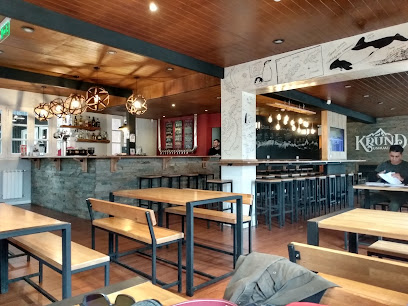
Jeremy Button Gin Bar
Explore the southernmost city with artisanal gin and a cozy atmosphere at Jeremy Button Gin Bar, Ushuaia's go-to spot for nightlife.
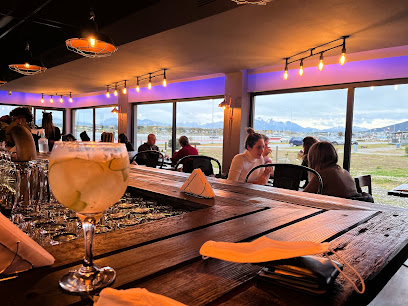
The Birra
Discover the vibrant nightlife at The Birra, Ushuaia's premier bar offering an extensive drink selection and lively atmosphere.

Cervecería Grut '84
Discover the vibrant atmosphere and exceptional craft beers at Cervecería Grut '84 in Ushuaia, the ultimate destination for beer lovers.

Cerveza Patagonia - Refugio Ushuaia
Experience the authentic taste of Patagonia at Cerveza Patagonia - Refugio Ushuaia, where craft beer and local cuisine come together in a warm atmosphere.

Club 1210 Ushuaia
Experience the vibrant nightlife of Ushuaia at Club 1210, a lively bar and brewery offering local craft beers and delicious gastropub cuisine.

Latino Pub
Discover the vibrant Latino Pub in Ushuaia, where lively culture meets refreshing cocktails and unforgettable nights.

Local Phrases about Tierra del Fuego National Park
-
- HelloHola
[oh-lah] - GoodbyeAdiós
[ah-dee-ohs] - YesSí
[see] - NoNo
[noh] - Please/You're welcomePor favor/De nada
[por fah-vor/de nah-dah] - Thank youGracias
[grah-see-ahs] - Excuse me/SorryDisculpe/Perdón
[dee-skool-peh/pehr-dohn] - How are you?¿Cómo estás?
[koh-moh ehs-tahs] - Fine. And you?Bien. ¿Y tú?
[byehn. ee too] - Do you speak English?¿Hablas inglés?
[ah-blahs een-glays] - I don't understandNo entiendo
[noh ehn-tyehn-doh]
- HelloHola
-
- I'd like to see the menu, pleaseMe gustaría ver el menú, por favor
[meh goos-tah-ree-ah behr ehl meh-noo, por fah-vor] - I don't eat meatNo como carne
[noh koh-moh kahr-neh] - Cheers!¡Salud!
[sah-lood] - I would like to pay, pleaseMe gustaría pagar, por favor
[meh goos-tah-ree-ah pah-gar, por fah-vor]
- I'd like to see the menu, pleaseMe gustaría ver el menú, por favor
-
- Help!¡Ayuda!
[ah-yoo-dah] - Go away!¡Vete!
[veh-teh] - Call the Police!¡Llama a la Policía!
[yah-mah ah lah poh-lee-see-ah] - Call a doctor!¡Llama a un médico!
[yah-mah ah oon meh-dee-koh] - I'm lostEstoy perdido
[ehs-toy pehr-dee-doh] - I'm illEstoy enfermo
[ehs-toy ehn-fehr-moh]
- Help!¡Ayuda!
-
- I'd like to buy...Me gustaría comprar...
[meh goos-tah-ree-ah kohm-prahr...] - I'm just lookingSolo estoy mirando
[soh-loh ehs-toy mee-rahn-doh] - How much is it?¿Cuánto cuesta?
[kwan-toh kwehs-tah] - That's too expensiveEsto es demasiado caro
[ehs-toh ehs deh-mah-syah-doh kah-roh] - Can you lower the price?¿Puede bajar el precio?
[pweh-deh bah-har ehl pree-syoh]
- I'd like to buy...Me gustaría comprar...
-
- What time is it?¿Qué hora es?
[keh oh-rah ehs] - It's one o'clockEs la una
[ehs lah oo-nah] - Half past (10)Son las diez y media
[sohn lahs dyehs ee meh-dyah] - MorningMañana
[mah-nyah-nah] - AfternoonTarde
[tahr-deh] - EveningNoche
[noh-cheh] - YesterdayAyer
[ah-yehr] - TodayHoy
[oy] - TomorrowMañana
[mah-nyah-nah] - 1Uno
[oo-noh] - 2Dos
[dohs] - 3Tres
[trehs] - 4Cuatro
[kwah-troh] - 5Cinco
[seen-koh] - 6Seis
[sace] - 7Siete
[see-eh-teh] - 8Ocho
[oh-choh] - 9Nueve
[nweh-veh] - 10Diez
[dyehs]
- What time is it?¿Qué hora es?
-
- Where's a/the...?¿Dónde está...?
[dohn-deh ehs-tah] - What's the address?¿Cuál es la dirección?
[kwal ehs lah dee-rehk-syon] - Can you show me (on the map)?¿Puedes mostrarme (en el mapa)?
[pweh-dehs mohs-trar-meh (ehn ehl mah-pah)] - When's the next (bus)?¿Cuándo llega el próximo (autobús)?
[kwan-doh yeh-gah ehl proh-ksee-moh (ow-toh-boos)] - A ticket (to ....)Un boleto (a ....)
[oon boh-leh-toh (ah)]
- Where's a/the...?¿Dónde está...?
History of Tierra del Fuego National Park
-
Long before European explorers set their sights on Tierra del Fuego, it was inhabited by the Yaghan and Selk'nam peoples. The Yaghan, also known as Yámana, were coastal dwellers who mastered the art of navigating the frigid channels in canoes. The Selk'nam, or Ona, were nomadic hunters of the interior. Both cultures left behind a rich tapestry of oral traditions, archaeological sites, and a deep spiritual connection to the land now encompassed by the national park.
-
In 1520, the Portuguese explorer Ferdinand Magellan became the first European to navigate the strait that now bears his name, marking the beginning of European interest in Tierra del Fuego. The region's harsh climate and challenging geography deterred prolonged settlement, but it became a focal point for subsequent explorers seeking new maritime routes and scientific discoveries.
-
In the early 1830s, the HMS Beagle, with Charles Darwin on board, made several stops in Tierra del Fuego. Darwin was fascinated by the area's unique geology and biodiversity, as well as the indigenous peoples he encountered. His observations during this voyage significantly influenced his later work on the theory of evolution by natural selection.
-
The late 19th century saw a gold rush in Tierra del Fuego, attracting a wave of European settlers and fortune seekers. This influx led to significant disruption of the indigenous populations, particularly the Selk'nam, who faced displacement, violence, and disease. The rapid colonization during this period drastically altered the cultural landscape of the region.
-
Tierra del Fuego National Park was established in 1960 as part of Argentina's efforts to preserve its natural heritage. Spanning over 63,000 hectares, the park protects diverse ecosystems, including sub-Antarctic forests, peat bogs, and coastal environments. It serves as a sanctuary for numerous species of flora and fauna, as well as a living testament to the region's complex history.
-
In recent decades, Tierra del Fuego National Park has become a focal point for conservation initiatives aimed at protecting its unique biodiversity and cultural heritage. Efforts include reforestation projects, invasive species control, and the promotion of sustainable tourism. The park also collaborates with local communities and indigenous groups to ensure that their histories and traditions are honored and preserved.
Tierra del Fuego National Park Essentials
-
Tierra del Fuego National Park is located near the southernmost city of Ushuaia in Argentina. The most common way to reach the park is by flying into Malvinas Argentinas International Airport (USH) in Ushuaia. There are regular flights from Buenos Aires and other major Argentine cities. From the airport, you can take a taxi or shuttle service to the park, which is approximately a 30-minute drive. Alternatively, you can reach Ushuaia by bus from other parts of Argentina, though this option is more time-consuming.
-
Within Tierra del Fuego National Park, transportation options include guided tours, rental cars, and shuttle buses. Guided tours are convenient for those who want in-depth information about the park's history and natural features. Rental cars offer flexibility for exploring at your own pace, while shuttle buses provide a cost-effective way to reach key areas within the park. Additionally, many trails are accessible on foot or by bike, making it easy to explore the park's natural beauty.
-
The official currency in Argentina is the Argentine Peso (ARS). Credit and debit cards are widely accepted in Ushuaia and within the park, but it's advisable to carry some cash for smaller purchases and in case of connectivity issues. ATMs are available in Ushuaia, so it’s wise to withdraw sufficient cash before heading into the park.
-
Tierra del Fuego National Park is generally safe for tourists. However, it's important to take standard safety precautions. Avoid wandering off well-marked trails, and always carry a map or GPS device. Ushuaia is also relatively safe, but like any tourist destination, be mindful of your belongings and avoid isolated areas at night. There are no known high-crime areas specifically targeting tourists in Ushuaia.
-
In case of an emergency, dial 911 for immediate assistance. Ushuaia has medical facilities and a hospital to handle emergencies. It's recommended to have travel insurance that covers medical emergencies, including evacuation. Carry a basic first aid kit and familiarize yourself with the locations of ranger stations within the park, as they can provide assistance and information.
-
Fashion: Do wear comfortable, weather-appropriate clothing and sturdy hiking boots. Layering is advisable due to the unpredictable weather. Avoid wearing flashy or expensive jewelry. Religion: There are no significant religious customs to be aware of specific to the park, but always respect local traditions and practices. Public Transport: Do respect fellow passengers and follow local etiquette on public transportation. Don’t eat or drink on buses or shuttles. Greetings: A simple handshake is a common form of greeting in Argentina. Use 'Hola' for hello and 'Gracias' for thank you. Eating & Drinking: Do try local dishes such as Patagonian lamb and seafood. Don’t refuse food or drink offered by locals, as it may be considered impolite.
-
To experience Tierra del Fuego National Park like a local, consider visiting during the off-peak seasons (spring and autumn) to avoid the tourist crowds. Engage with park rangers and local guides who can offer unique insights into the park's history and ecology. Don’t miss the chance to take the End of the World Train for a scenic route through the park, and try to visit the less frequented trails for a more secluded experience. Additionally, practice 'Leave No Trace' principles to help maintain the park's pristine condition.
Trending Landmarks in Tierra del Fuego National Park
-
Plaza Islands Malvinas
-
Laguna Esmeralda
-
Cartel Ushuaia
-
Estacion Tierra del Fuego National Park
-
Glaciar Vinciguerra
-
Beaver
-
Cerro Alarkén
-
Cerro Guanaco
-
Puerto Arias
-
Monumento Antiguos Pobladores
-
Intendencia Parque Nacional Tierra del Fuego
-
Senda paseo de la isla
-
Parque Nacional Tierra del Fuego
-
Mirador de la ciudad
-
SENDERO AL LADO DEL RÍO
Nearby Cities to Tierra del Fuego National Park
-
Things To Do in Punta Arenas
-
Things To Do in Puerto Natales
-
Things To Do in El Calafate
-
Things To Do in Bariloche
-
Things To Do in San Carlos de Bariloche
-
Things To Do in Puerto Varas
-
Things To Do in Osorno
-
Things To Do in Valdivia
-
Things To Do in Pucon
-
Things To Do in Temuco
-
Things To Do in Concepción
-
Things To Do in Mar del Plata
-
Things To Do in Curicó
-
Things To Do in San Rafael
-
Things To Do in Rancagua










